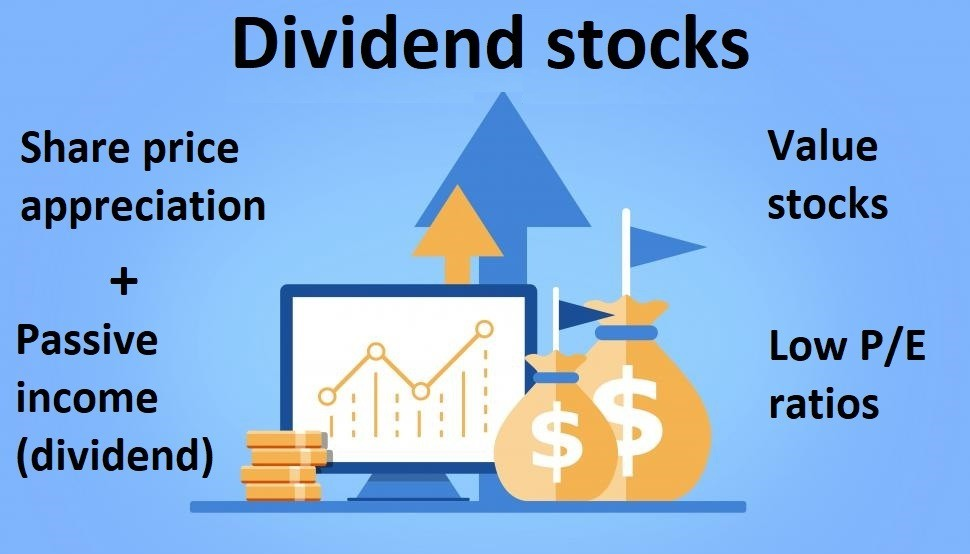What is Dividend, how companies issues to shareholder's
The board of directors of a firm decides how much of its earnings to distribute to shareholders as a dividend. Quarterly dividend payments are common, and they can take the form of cash payments or stock reinvestment.
The dividend yield, which may be stated as dividend/price as a percentage of a company's share price, like 2.5 percent, is the dividend per share.

KEY KNOWLEDGE
Dividend
Dividends can be paid out in the form of stock shares, although cash dividends are more typical. Dividends are paid by a number of mutual funds and exchange-traded funds (ETFs).
A dividend is a payment made by a business to its shareholders as compensation for their equity investment; it typically comes from net earnings. A portion of profits can be distributed to shareholders as a dividend, even if they can also be held by the firm as retained earnings to fund current and future business endeavors.
Even in situations when they don't generate enough revenue to continue their established dividend payment history, companies are nevertheless permitted to pay dividends.
The board of directors has the authority to decide how long and at what rate to pay out dividends. A set frequency of payments, such as monthly, quarterly, or yearly, may be used for dividend payments.
Best Dividend Yield Stocks in India
| Name | Dividend Yield(%) |
|---|---|
| Coal India | 7.85 |
| Styrenix Perfor. | 7.45 |
| ONGC | 6.06 |
| Power Grid | 5.44 |
| PTC India | 5.43 |
| HUDCO | 5.09 |
| GSFC | 5.07 |
| Redington | 4.97 |
| Banco Products | 4.84 |
| Accelya Solution | 4.70 |
| VST Industries | 4.68 |
| Steel City Sec. | 4.65 |
| CPCL | 4.62 |
Top Dividend Yield Sectors
| Basic Minerals |
|---|
| Oil and Gas |
| Banks and Financial Services |
| Healthcare and pharmaceuticals |
| Utilities |
Important Dividend Dates
| Announcement Date | On the announcement day (also known as the declaration date), the company's management declares the dividends, which are subject to shareholder approval before being paid. |
|---|---|
| Ex-dividend date | The ex-date, also known as the ex-dividend date, is the day on which the dividend eligibility expires. For example, if the ex-date of a stock is Monday, May 5, then stockholders who purchase the shares on or after that day will not be eligible for the dividend. The distribution is made to shareholders who own the shares on Friday, May 2, or earlier, one working day before the ex-date. |
| Record Date | The cutoff date, known as the record date, is set by the corporation to ascertain whether shareholders are qualified to receive a distribution or dividend. |
| Payment Date | On the payment day, when the funds are credited to investors' accounts, the corporation issues the dividend payment. |
What Impact Do Dividends Have on the Price of a Stock?
For instance, on the announcement day, a business that is trading at 600 per share announces a 50 dividend. The share price may rise by 50 to 650 if the news is made public.
Why does companies pays dividend to Shareholder's ?
"Dividends are often expected by the shareholders as a reward for their investment in a company". Dividend payments reflect positively on a company and help maintain investor trust.
A high-value dividend announcement may be a sign of successful business operations and strong profit margins. However, it may also mean that the business is not working on projects that will allow it to make more money down the road. As a result, rather than reinvesting its wealth in expansion, it is paying shareholders.
How to Buy Dividend-Paying Investments
Exchange-traded funds (ETFs), mutual funds, and stocks are some of the alternatives available to investors looking to make dividend investments. Stock investment selection can be aided by the Gordon Growth Model or the Dividend Discount Model. These methods evaluate shares based on projected future dividend streams.
Investors may use the dividend yield factor, which expresses the dividend as a proportion of the share price at current market value, to evaluate various stocks depending on how well they have paid their dividends.
The dividend rate is expressed as the dollar amount of dividends per share (DPS) that each share gets. Apart from dividend yield, the total return factor is a crucial performance metric to evaluate the returns derived from a certain investment.
How Frequently Do Dividends Get Paid to Stockholders?
'Although some businesses may deliver dividends semi-annually, most corporations send dividends to shareholders on a quarterly basis'. Cash payments or stock in the firm reinvested are accepted forms of payment.
Related Articles